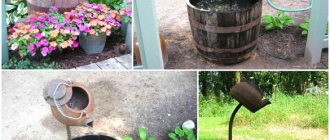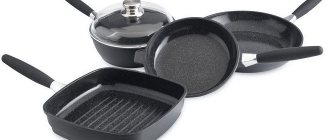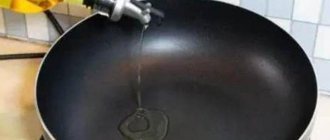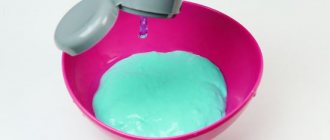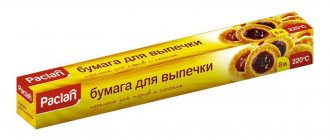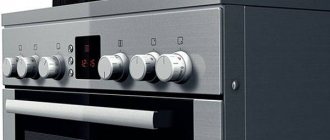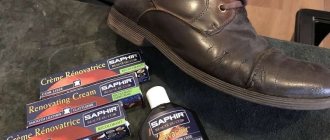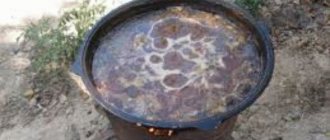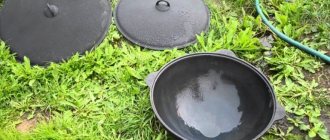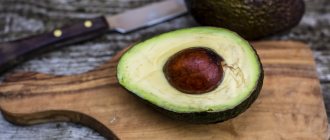Cleaning cast iron products from rust
- Purchasing cookware with low quality coating. Unfortunately, no one is safe from buying a frying pan that is sold under the name of a well-known brand, but is a fake. The durability of the coating depends on the quality.
- Lifetime. Manufacturers always indicate the effective spraying service time. The average period is 2–3 years. Titanium or diamond coating is considered the most wear-resistant. With proper use, the frying pans will faithfully serve for up to 25 years.
- The appearance of minor defects, scratches and cracks due to improper use and care. For non-stick frying pans, use only wooden, plastic or silicone utensils, soft sponges and products that do not contain abrasives - others may leave scratches. The appearance of microcracks gradually develops into a problem with food sticking and burning and, as a result, the frying pan becomes completely unusable.
The method can be varied - add a little soda to the salt, things will go faster.
How to clean a frying pan from carbon deposits: 10 methods, useful recommendations
- Calcination in an oven. It is necessary to preheat the oven to 200°C, thoroughly grease the entire surface of a completely dry, clean dish, both inside and outside, with vegetable oil. It is important that there are no unimpregnated areas left. Then place the frying pan on the grill, bottom up, and leave in this position for 1-1.5 hours. Afterwards, turn off the oven and cool the dishes without removing them.
- Heat the frying pan on the stove for a minute, then remove from heat and thoroughly rub with vegetable oil, cool.
Products made from cast iron are the most reliable and safe for humans.
How long do Teflon pans last?
The service life of a Teflon frying pan depends on its thickness.
- 3-4 years – with a thin bottom and side walls.
- 5-6 years - with a cellular (not smooth) coating and a fairly thick bottom.
- About 10 years old - with a thick bottom, side walls and multi-step Teflon coating (it has a rough texture).
With the most delicate handling, two to three years is the period after which the frying pan needs to be replaced.
New dishes from SMEG
The dishes of the Italian manufacturer SMEG look as stylish as its hobs, stoves, juicers, coffee machines and other appliances that make the kitchen cozy and functional. Made in the best Italian tradition, SMEG cookware combines practicality, safety, 50s-style elegance and functionality.
The brand's catalog contains frying pans with a diameter of 24, 26, 28 and 30 cm, saucepans with a diameter of 24 and 26 cm and stewpans with a diameter of 20 cm. The design of the collection was developed jointly with famous architects Raffaella Mangiarotti and Matteo Bazzicalupo from the Milanese studio Deepdesign. The products have rounded shapes and are available in three matte colors - cream, black and red. The advantage of SMEG cookware is its versatility - you can cook with such pots and pans on gas, electric and induction hobs. High-quality coating, heat-resistant stainless steel handles and lids made of tempered glass are not afraid of high temperatures. The dishes can be safely placed in an oven preheated to 250 degrees. The non-stick Teflon coating allows you to cook with minimal use of oil. At the same time, food does not burn or stick to the walls. It is completely safe, does not contain perfluorooctanoic acid (PFOA), so it can come into contact with foods without changing their taste.
What are the advantages and disadvantages of Teflon frying pans?
Any material combines positive and negative qualities. On the one hand, it is simply irreplaceable, but on the other, it requires special care or handling skills. This also applies to such a common material for non-stick coating of frying pans as Teflon.
Teflon frying pans have an important advantage - they are lighter in weight than ceramic ones and, of course, lighter than cast iron ones.
Let's look at them in more detail.
- Teflon-coated pans heat up quite quickly. This makes the cooking process more convenient and not very time-consuming.
- Teflon coating prevents the proliferation of pathogenic organisms.
- Cooking with them is also convenient because you don’t need to use a lot of oil. You just need to lightly grease the pan with a whisk, or you can do without it at all. Such food, moreover, becomes more healthy and low-calorie.
- Teflon-coated pans are easy to clean, because food does not stick and can be removed with a soft sponge without much effort.
- These dishes are light in weight. Lightness makes it more convenient to use.
- Teflon pans are quite durable, provided that the non-stick coating is not damaged.
Is it possible to restore the non-stick coating on a frying pan at home?
Another obvious solution to the problem is to try to apply a new non-stick coating yourself to replace the damaged one.
You must understand that it is simply impossible to do this efficiently at home. Applying a non-stick layer is a complex process. A composition consisting of several components is applied to the prepared surface. This is often done under high pressure. Then you need to wait for the layer to dry. Drying does not take place at room temperature, but in special chambers. Finding materials and following the technology for applying a non-stick layer at home is unrealistic.
If you wish, you can contact companies that specialize in restoring damaged non-stick coatings. But often it will be cheaper to buy a new frying pan than to repair an old one.
Therefore, if scratches, chips appear on the non-stick layer, and food begins to burn, it is better to seriously think about buying a new frying pan. And in order to extend its service life, you must follow all the manufacturer’s recommendations for its operation.
Which coating is better, Teflon or ceramic?
Ceramic, along with Teflon, is one of the most popular non-stick coatings. To figure out which one is better, let's look at the pros and cons of the first.
Advantages of ceramic coating:
- Withstands very high temperatures - about 450 degrees.
- More resistant to mechanical damage than Teflon.
- During the cooking process, you can use a small amount of oil (only the necessary minimum).
- Easy to clean.
- Does not release carcinogenic substances when heated.
The size of the bottom layer affects the strength of the pan when heated. The thicker the bottom, the lower the risk of deformation of the pan.
Disadvantages of ceramic coating:
- Afraid of too strong temperature changes (a hot frying pan under cold water).
- You cannot use metal utensils, only wood, plastic, and silicone.
- You should not soak such products for a long time. It's better to wash immediately.
The lightest models, as a rule, are not durable and strong, and deformation of the coating can be relatively rapid.
Based on the characteristics of the ceramic coating, we can conclude that it is an environmentally friendly alternative to Teflon, while having all its positive characteristics.
How to clean a frying pan outside and inside: 6 tips and life hacks for different pans
In order for the pans to serve you for a long time and not overshadow the cooking process, they need to be cleaned of dirt in a timely manner. However, different frying pans require different care.
To make household chores a joy, dress nicely and comfortably at home! Pay attention to the patterns of home dresses, home trousers and home tops in our electronic catalog.
Before cleaning the inside of a frying pan, you must first determine whether it has a non-stick coating and what material the frying pan is made of. What will benefit a cast iron frying pan can irreparably damage, for example, a Teflon-coated frying pan.
How to clean the inside of a frying pan with a Teflon non-stick coating
As a rule, pans with a non-stick coating do not get too dirty from the inside - precisely because of this coating. But if this does happen, boil water and soda in a frying pan. Pour water into a frying pan, add a couple of tablespoons of soda and put on fire. Wait for it to boil and simmer over low heat for a few minutes, then turn off the heat and leave until cool. Then pour out the water and wash the pan with water and a soft sponge.
Another way: fill the frying pan with hot water and detergent and let it sit. Then wash with a foam sponge. You can also use laundry soap.
How not to wash Teflon pans:
In general, you should handle the non-stick Teflon coating as carefully as possible: do not rub it with the hard side of a sponge, metal mesh, abrasive detergents, do not use metal spatulas, do not ignite it: all this can damage the coating.
Temperature changes also have a negative impact on the coating. That is, do not place a frying pan that has recently been removed from the heat under cool or cold water, but let it cool.
How to clean quickly and efficiently: 2 life hacks from professionals
How to clean the inside of a ceramic-coated frying pan
Ceramic coating is more resistant than Teflon, but you should not use too aggressive agents when washing such pans, so as not to damage it.
If there is dirt on the frying pan that is difficult to clean, try soaking the frying pan by pouring water and detergent into it.
Fresh dirt can be removed from a hot frying pan by rubbing it with a napkin or cloth moistened with vegetable oil.
You can remove dirt from a cooled pan by wiping it with a cloth moistened with alcohol.
You can also use a solution of oven cleaner. In general, such agents may differ in concentration and aggressiveness of impact. Therefore, it is better to test on a small area from the edge of the wall of the frying pan. But before that, be sure to dilute the product in water in a ratio of 1/20.
How not to wash ceramic pans:
They cannot be washed with soda and other abrasive cleaning agents, hard sponges and metal meshes, or melamine sponges. It is better not to use the boiling soda method for such pans. They also cannot be heated. Avoid temperature changes: do not place a hot frying pan under cold water.
Idea: Double-sided, reusable cleaning wipes
How to clean the inside of an aluminum frying pan
Aluminum frying pans are easier to maintain, but carbon deposits form on them more often than on Teflon or ceramic ones.
The easiest way to clean the inside of a pan is to try boiling it with baking soda. Pour water into the pan and add baking soda - the more, the more dirty it is. Bring the water to a boil and simmer over low heat for several minutes. Leave until cool and try washing the pan. You can use hard plastic brushes and the abrasive side of a sponge. It happens that not all contaminants are removed the first time. Then after washing, repeat the boiling process.
How not to wash aluminum cookware:
Products that contain chlorine or aggressive alkali can change the color of the dishes; it is better not to use them. Also, do not wash such pans with metal brushes, meshes or other too hard devices that can scratch the aluminum. Scratches, even small ones, will cause the food to burn more.
Wool laundry balls: why are they needed and how to make them
How to clean the inside of a cast iron frying pan
To prevent food from sticking to the frying pan when using it, it must be heated before first use.
To do this, wash the pan thoroughly and dry it. Sprinkle a thick layer of salt on the bottom and place on the fire. Heat the pan over low heat for an hour, stirring the salt occasionally. Then turn off the heat, wait for the pan to cool and pour in the salt. Wipe the pan thoroughly with a cloth to remove any remaining salt. Rub vegetable oil into the pan using a napkin. Then heat the pan and cool.
Then, after each cooking session, wipe down the pan with oil.
If contaminants still form inside, try boiling with soda, described above.
In the case of a cast iron frying pan, you can also add a couple of tablespoons of salt and a little table vinegar to the boiling water.
If the dirt is very strong, you can heat the pan in the oven using the oven's self-cleaning function. After this, let the pan cool and wash it. Then dry and wipe with vegetable oil, heat and cool.
You can also wash the frying pan with salt paste: pour a couple of tablespoons of salt into it, mix with a little water and rub using a sponge. Then wash the frying pan, wipe dry, grease with oil and heat.
What not to wash cast iron pans:
Do not use anything too hard, such as a metal mesh, to avoid scratching the surface. Do not leave water in the pan for a long time to prevent rust. For the same reason, it is better to immediately wipe the frying pan after washing and do not store it where water may get on it.
Why can natural silk be washed with hair shampoo?
Can pans be washed in the dishwasher?
It is best not to wash Teflon-coated pans, aluminum pans or cast iron pans in the dishwasher. Most often, it is not recommended to wash frying pans with a ceramic coating in it either. But it happens that the manufacturer indicates that this is possible for different frying pans, then follow his instructions. For example, some pans can be washed in the dishwasher on a delicate cycle.
How to properly wash brushes and hair combs: 6 tips and life hacks
How to clean the carbon deposits from the outside of a frying pan?
You can wash off the carbon deposits that form on the outside of the frying pan in different ways.
If you don't mind the possibility of scratches, use hard brushes and metal mesh. Before doing this, you can soak the frying pan in hot water with dissolved soda. Leave the pan in the solution for at least 20 minutes, then try to remove the stains mechanically. Repeat until you are satisfied with the result.
Another way: mix salt, baking soda and dish soap and coat the outside of the pan with the mixture, turning it over before doing so. Cover the pan with paper towels and pour vinegar on top. Leave it for a while. Remove the wipes; most of the dirt should be easily removed.
Uncoated aluminum and cast iron frying pans can be baked in the oven. Do not use this method for pans with wooden or plastic handles. Place the pan in the oven and turn on the self-cleaning mode or set the temperature to high, close the door and leave the pan to bake for 1-2 hours. The dirt will simply burn off, and what remains will be easy to wash.
You can also use grease and carbon removers to clean the outside of frying pans. Proceed according to the instructions: apply the product, leave for the required time, rinse. When doing this, make sure that the product does not get on the inside of the pan.
How to wash black clothes correctly
Photo: hssuk.co.uk, Tramontina, apartmenttherapy.com, thespruce.com, panelux.com.br, seriouseats.com
Cleaning a Cast Iron Frying Pan
- Foam is the fastest-acting remedy. After application to the surface, the contamination dissolves within 15 minutes.
- Gel and cream are thick, highly concentrated substances. They are applied to a dirty surface for 30 minutes.
- The spray is applied to the outside of the product and wait for the time specified in the instructions.
In order to clean the inside of a stainless steel frying pan, you can use both store-bought grease removers and traditional methods. The following substances are most effective for cleaning carbon deposits:
Popular manufacturers of Teflon frying pans
The most famous companies engaged in the production of such tableware delight us with their new products and improved models from year to year. The leading ones among them are the following.
- Tefal.
- Rondell.
- Fissler.
- NMP (Neva-Metal Utensils).
- Gipfel.
- Vitesse.
Teflon coating is a convenient invention designed to facilitate the cooking process. However, we should not forget that everything has two sides: positive and negative. When choosing a frying pan with such a non-stick coating, be very careful and careful. And may your kitchen be safe.
Buy dishes with a thermopot (temperature indicator). This way you will save it from the danger of overheating.
